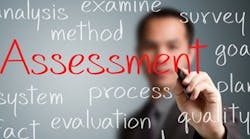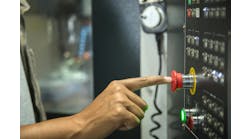Joe Feeley is editor in chief for Control Design and Industrial Networking.
During the recent 2013 Automation Fair, Rockwell Automation unveiled an online, self-guided safety assessment tool that some of your customers might be using soon. It might involve you, as machine builder, to some degree.
Drawn from studies, research, collaboration with leading manufacturers and Rockwell's own experience, the Safety Maturity Index (SMI) is touted as a comprehensive measurement of safety culture, compliance processes/procedures and capital investments in safety technologies. It helps companies understand their current level of performance and what they can do to improve.
SEE ALSO: What's Your Company's Safety Maturity Index?
"One of the key things that played into the development of this was to understand what we've referred to as the 'epiphany' that companies experience," Steve Ludwig, safety programs manager, told me. "Why does a company that found it acceptable to have 75 incidents last year suddenly decide that 76 this year is not at all acceptable?"
Rockwell took careful note of a recent Aberdeen study that reported that the safest companies also were the most productive. Those are not mutually exclusive objectives. "The safest had higher OEE, less unscheduled downtime and less than half the injury rate of average performance companies," he reported. "We saw that three "Cs," culture, compliance and capital, were present in these companies."
The research showed each of the Cs is equally critical and dependent on the other. A company that builds a strong safety culture can go only so far without complying with standards and investing in safety technologies. Manufacturers can make significant investments in safety technologies, but that only goes so far if safety isn't in the company's cultural DNA.
Operational excellence is, in fact, the key driver for companies in the top SMI level. "These companies are doing around 90% of what we deemed as essential to safe manufacturing," said Mark Eitzman, safety market development manager.
At the top index level, safety is an inherent value; everyone is held accountable and willingly accepts responsibility for themselves and the safety of their coworkers; and even suppliers must live up to required safety standards. "We think about 15% of the companies are in this top category right now," Eitzman said.
The knowledge necessary to improve each of the safety pillars often resides in disparate functional areas. "In most companies, EH&S is responsible for safety culture and company-wide compliance policies and procedures," Ludwig noted. "Engineering does the safety technology and the engineering procedures, and develops standards and safety assessments. They often don't talk, but communicating and collaborating across functional groups is essential for a comprehensive approach to safety."




